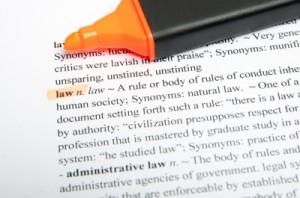Gamification: don’t limit yourself by definitions
Posted by Horst Streck on Jan 24, 2013 in Gamification blog posts | Comments Off on Gamification: don’t limit yourself by definitions
It came to my attention that people are still struggling with the definition of Gamification. For me, a definition is a guide line, nothing more. The broader the definition, the more I like it.
There is some confusion about the difference between Gamification and Serious (or Applied) Gaming. In general Serious Gaming is about turning reality into a game and Gamification is about bringing game elements into the real world. That probably makes it easier to remember. They both belong to the same family and work very well together, we should not be affraid to use them both if the occasion arises. Now let’s take a look at the definitions that are currently available for Gamification:
- Gamification is the integration of game mechanics or game dynamics into a website, service, community, campaign, or application in order to drive participation and engagement.
- Use of game play mechanics for non-game applications.
- The art and science of using game mechanics in non-game businesses to increase efficiency, customer loyalty and engagement.
- Gamification is the infusion of game design techniques, game mechanics, and/or game style into anything.
- The application of typical elements of game playing (e.g. point scoring, competition with others, rules of play) to other areas of activity, typically as an online marketing technique to encourage engagement with a product or service.
So which one is best? Does it really matter? The definition itself is less important than the results you achieve with it. Personally I don’t want to be tied up by a definition, for that reason I like 2 and 4 the most. I even made a definition of my own:
“Make things fun by adding game elements to achieve goals.”
This definition contains one simple phrase, understandable for all, with no explicit goal in it. That’s on purpose! By working on a solution I do not want to be limited by a definition, without a good reason. A solution leads to achieving a goal. A goal might be driving participation, but it could be something completely different as well. Sometimes points, badges and leader boards are appropriate, on another occasion they could be useless. So creating barriers in an early stage doesn’t help at all. One thing is very important to me and that is the fun factor. Fun should be applied always, fun makes it work. Nothing else! Let me remind you that fun is a very broad concept. Fun can be experienced in many ways. To make it even more difficult, different people have different opinions about what they experience as funny. If you think about fun deeply, it is something that is almost intangible. But…it is the hidden power behind all of this. If you are able to make it fun, it will work! Don’t get me wrong here. I am not saying that you should apply fun and that’s the end of it. Not at all, it should be connected to an entity, so that people will enjoy it more in order to reach your goals, whatever they might be. Let me give some examples:
- Make work fun, so people will be more efficient and less absent.
- Make your website more fun, visitors notice it and get engaged.
- Create marketing campaigns with a fun twist, so it gets more viral and has a bigger impact.
- Make an environment more fun, to attract tourists, or just to enjoy it more.
- Gamify a treatment and make reaching difficult goals an accomplishment and therefore fun.
This list can go on forever, only limited by our imagination. Not long ago I posted something that caught my attention, the title of the post is: “Let’s gamify that bridge!” It is a great example of a concept of a bridge by an architect. In short, three huge trampolines are tied up together in a great design of a bridge over the famous river the Seine in Paris. I got a response from someone, saying: “what does this has to do with Gamification?” Basically that response leaded to writing this post. It is clearly that he uses definition number one from the list of definitions I mentioned before. From his opinion he also has a point. To me however, this is a great example of Gamification, without any doubt. Trampolines are used to play games, that is the game element being used. By just putting them there, people will make up their own game. With trampolines the intrinsic motivation is huge, people will participate even without any particular reason. Those are the most powerful examples. With small mechanics you create big dynamics. Just placing that bridge is enough to make people go wild, the only mechanic it provides is a boost for the jumps. Now other issues that were brought up are: “what’s the purpose of this?” Do we want people to cross the river faster? “Do we need to learn them about bridging?” To me this was clear the moment I laid eyes on it. The bridge is a huge tourist magnet! People will film and share it with their friend online. No doubt this will have a huge impact. Slight side effect is that it makes the environment of people living nearby more fun.
To me this example tells me that we should never let definitions bother us when we create something. In my believe this is a great example of Gamification. But I don’t mind at all if people argue it. It is the solution that counts, not the definition!
